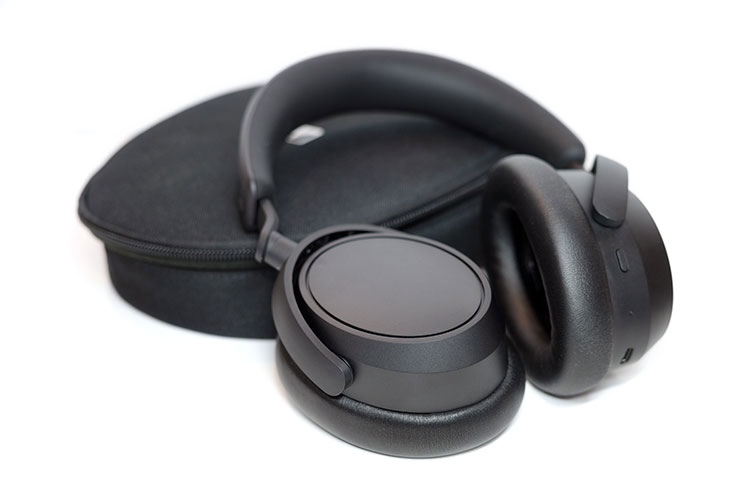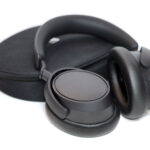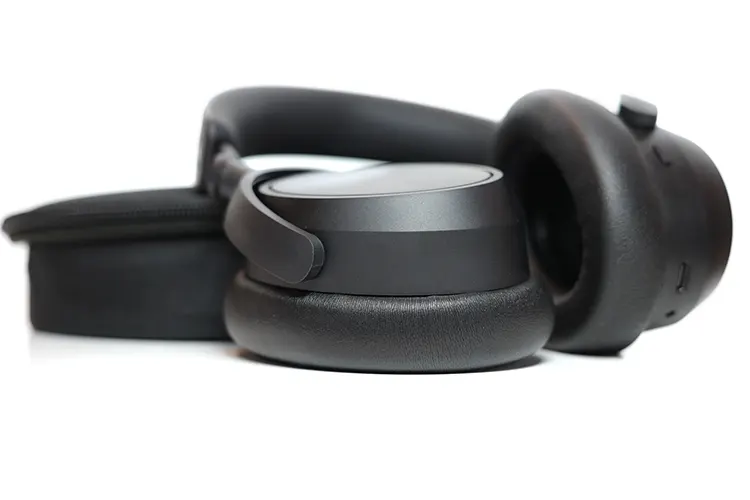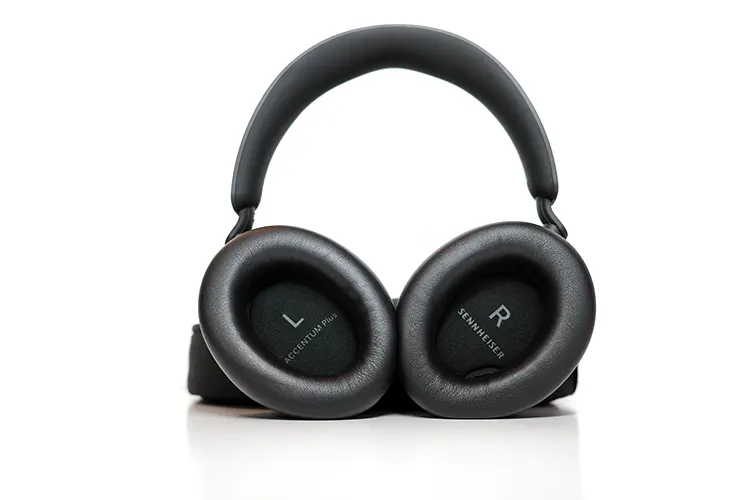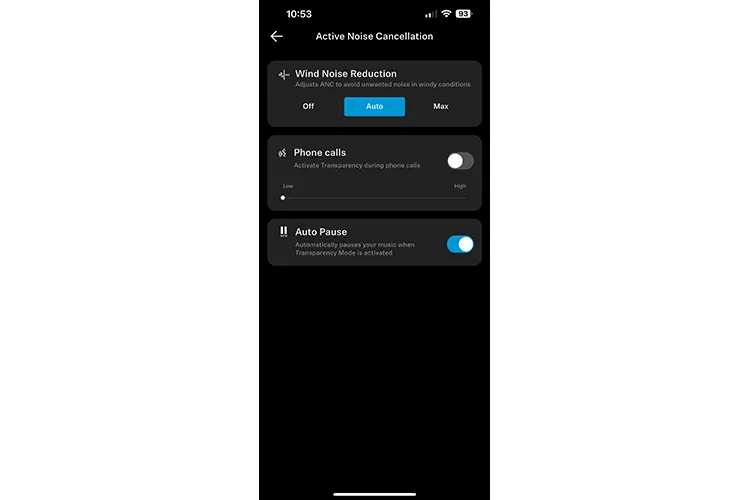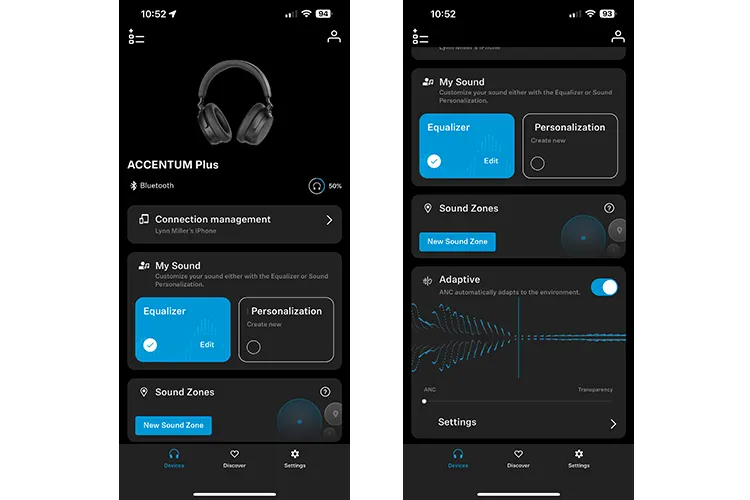Today, Lynn reviews the Sennheiser ACCENTUM Plus, which is a new set of ANC-equipped wireless closed-back headphones with enhanced ANC and touch controls. It is priced at $229.95.
Disclaimer: This sample was sent to me in exchange for my honest opinion. Headfonics is an independent website with no affiliate links or services. I thank Sennheiser for this opportunity.
Click here to learn more about the Sennheiser products we have previously reviewed on Headfonics.
Note, that this article follows our latest scoring guidelines which you can read in more detail here.
The Sennheiser ACCENTUM Plus Wireless was launched four months ago at the annual CES, on the heels of the ACCENTUM relatively quickly.
Like the original, this is also an active noise-canceling closed-back headphones from the company but at a slightly higher price point of $229.95.
With earcup touch controls and adaptive ANC, the Plus version adds a few tricks to the ACCENTUM to justify the higher price.
Let’s see how it stacks up against the regular ACCENTUM Wireless model, MOMENTUM 4 Wireless, including some of its competition in the wireless ANC headphone market in 2024.
Tech Highlights
The Sennheiser ACCENTUM Plus is a set of closed-back wireless headphones with additional adaptable ANC capability, which is also a hybrid version, and Smart Control app integration.
It has the same 37mm dynamic driver and supports 3.5mm audio for wired connectivity as well as USB-C. It has a BT 5.2-capable internal chipset for wireless connectivity.
The headphones are capable of receiving and decoding from SBC and AAC up to aptX, and aptX Adaptive codecs. The regular ACCENTUM uses aptX HD rather than aptX Adaptive, which supports a higher bitrate, while the latter scales more naturally depending on latency.
The hybrid ANC technology is adaptable through Sennheiser’s Smart Control app using the slider for the “hybrid effect,” but on the ear cup either ANC is on, or full transparency, there is no middle ground.
Sennheiser has a history of good ANC quality in their wireless options so it should be worthy of the moniker, and as good as the regular ACCENTUM. ANC will be discussed below but suffice to say it is an interesting take on the inclusion of this technology.
Design
The ACCENTUM Plus follows Sennheiser’s subtle and understated look in most of their recent Bluetooth models. Smaller in size than the MOMENTUM 4 Wireless (but not by much), the unit only folds flat and the cups do not fold up to make the unit more portable.
The cup size is medium-small, and those with larger ears will most likely suffer from the pads lying on their ears. Stuffed with memory foam, the pads are comfortable for moderate use but have no waterproof rating.
The ACCENTUM Plus is made mostly of plastic and the headband carries over in one piece with a memory foam insert underneath for head relief. While the fit and materials are on the budget side, they do follow the market segment.
That padding only goes halfway down the band in a somewhat odd shape while supporting the top of your head. Those with larger heads may find the pad/hard plastic interface could hinder comfort.
Vent slots sit on top of each cup, while two microphone holes sit on the face and side of the right cup; closer to where they are needed.
Instead of tactile buttons, there is a swipe gesturing system on the right earcup. Similar to other models, with swipe gesturing, the controls become intuitive with little effort.
Comfort & Isolation
The ACCENTUM Plus doesn’t creak when adjusting as one might expect due to the materials, and tactility is good. Tight construction allows you to adjust the unit comfortably, but the clamp pressure is still too tight for me.
The lack of memory foam across the extreme sides of the headband hinders comfort too, and I wish the foam could continue across the whole underside of the headband right to the cups.
I have reviewed many wireless headphones over the years, and even with the issues mentioned, I find the ACCENTUM Plus to still be in about the middle when taking both construction and fit into the equation.
Those pads while comfortable, could get warm in the summer months due to the smaller size, and added clamp pressure, though; since they are identical to the regular ACCENTUM.
The smaller, more discrete design is preferable to me too since I am not keen on promoting a flashy look in public. This looks exactly like many other headphones, allowing the ACCENTUM Plus to blend in nicely like its cousin.
The lighter weight of the ACCENTUM Plus (though 50+ grams heavier than the ACCENTUM) also helps keep the unit wearable for longer periods (if the clamp pressure does not bother you).
ANC Performance
I feel that Sennheiser took note of what we said in the review of the ACCENTUM, labeling ANC as “ANC-lite,” which worked but seemed a shortchange from the MOMENTUM 4 Wireless.
The ACCENTUM Plus adds more to the tech than the original model but still seems slightly less defined than its more expensive siblings.
That said, I didn’t notice much difference between adaptive ANC and standard ANC at its maximum level. However, the ACCENTUM Plus delivers quality noise cancellation for the price, regardless.
Unlike the original ACCENTUM, which used the power button to toggle ANC on & off via an Android or iOS source the ACCENTUM Plus uses a double tap on the right ear cup to toggle through. You can also use the Smart Control app on your device and have those capabilities also.
Battery Life
The ACCENTUM Plus battery life is impressive. I was able to attain the purported 50-hour mark on both my iPhone 13 Pro Max and the Cayin N6ii DAP.
Switching ANC on or off did not shorten the battery life much either. The iPhone came in right at 50 hours, and the N6ii at 53 hours. These numbers are very close to the ACCENTUM’s 49 and 52 hours, respectively.
A 10-minute charge will give you an additional 5 hours of listening time, which is right on par with many wireless headphones out. However, it is not as good as the MOMENTUM 4 Wireless. A longer charge time of 3.5 hours versus 3 adds a bit as well.
Voice/Call Quality & Assistant
The ability to hear phone conversations has come a long way in the past several years, so ACCENTUM Plus benefits from Sennheiser’s technological development across its wireless offerings. Hindered by smaller microphones, the wind does come into play a bit.
While not as good as the MOMENTUM 4 Wireless (or the much pricier Sony WH-1000XM5 and B&W Px8) it is absolutely on par with the peer offerings in this range.
The wind did hinder quality a little as well. I tried talking to our son on another windy Lake Superior day in the woods, with much wind noise in the trees.
He mentioned that he could hear the wind, but the quality was still decent, compared to conversations we have had using other units.
Controls
The ACCENTUM Plus right earcup’s outer panel uses a capacitive touch surface as mentioned above.
The touch features handle playback (one tap), call management, music navigation, and volume. Tapping twice switches between ANC and Transparency modes. You can’t remap the ACCENTUM Plus controls in the app.
There is also the start and stopping of music when removing the unit or placing it back on your head. This can be changed in the app.
Smart Control App
Having previously downloaded the Sennheiser Smart Control app for a different review, and used it on the ACCENTUM, the ACCENTUM Plus connected seamlessly, and (another) firmware update presented itself.
Once updated the app provided a useful assortment of adjustments including seven EQ presets along with a customizable five-band offering.
You can even tailor those choices to fit your bill and save them over the existing presets. Sennheiser also offers a “restore” feature, which returns all to the factory settings; a nice feature.
I noted that when incorporating “Bass Boost” though, the volume level dropped and it was not as dramatic of a low-end boost as I had hoped. I did sense more presence in the upper bass region with the feature turned on.
Multipoint
The ability to connect to two devices simultaneously is another positive. You can have your phone and laptop connected, which allows you to seamlessly switch between the two should you receive a phone call. You can then hit play again and your music returns.
Sennheiser has left some control of the ACCENTUM Plus functions (play/pause) in the user’s hand instead of making it an automatic return to music. Some will like this, some will not.
Sound Check
A benefit of Sennheiser’s “Sound Check” feature is that you can carry your “profile” over to other Sennheiser devices. I can see the benefit of this but I did not create an account to test the feature out.
The same holds for “Sound Zones” when creating specific scenarios, to tailor your ACCENTUM Plus sound based upon environmental factors such as location & noise.
You can create up to 20 separate zones, which allows you to tailor the sound settings for each location-based zone.
Some like to enhance the sound for the gym while scaling back when in their listening room. This is another benefit but does require the user to register an account.
Packaging & Accessories
The ACCENTUM Plus comes in a smaller square box containing the headphones, an instruction manual, a charging cable; and now a case.
A dedicated 3.5mm se to 3.5mm single-ended cable is included in the package, which marks another change from the original ACCENTUM.
The case is also laid out in an efficient manner where each of the two cables is kept. One can be stored on the underside of the lid (along with a business card slotted spot for the instruction manual; and one below between the headphones.
The ACCENTUM Plus folds flat, which helps to minimize the case depth.
Wireless Sound Impressions
The following sound impressions were completed using a mix of the Cayin N6ii, the Shanling M6 Pro, an iPhone 13 Pro Max, and a MacBook Pro for my main transmitting sources.
Summary
The first-gen ACCENTUM was oriented towards an introductory approach to Sennheiser’s signature, with a good reach down low, and a midrange, which supplied the necessary detail while being slightly forward.
The ACCENTUM Plus deviates from this approach with a better-detailed response and a bit more clarity.
This could be construed as a more forward bass response as well, with a brighter signature adding to the perceived detail and clarity. That, like the ACCENTUM, is not entirely the case.
Bass
Still running the EQ setting flat, I found that the ACCENTUM Plus bass still falls a bit short of having true grunt, but the quality comes about with a speedier decay than before.
The same issue still holds with Bass Boost: when activated, the audio volume level decreases. So, to use Bass Boost, you will need to raise the volume.
There seems to be less bleed into the midrange while moving up the scale too, making for a weighty note, that does not hinder other parts.
Midrange
The energetic middle of the ACCENTUM Plus still holds, with vocals sounding particularly sweet, if still a bit too far forward for my tastes.
By dropping the FR at approximately 5kHz, I found my sweet spot when playing vocal music or jazz that carried an energetic midrange.
The natural tonality to the mids still pervades, regardless of EQ settings. There seems to be a better mix between the organic sound and energy, which might come across as that elevated bit.
This did not hinder my enjoyment, though. The clarity in this range comes closer to the MOMENTUM 4 Wireless than the previous ACCENTUM.
Treble
The ACCENTUM Plus top end still carries a smoothness to it, like the original model; but there is a bit of a spike at 8kHz, which can hinder overall tonality.
This does help define the brighter character mentioned above, but some may find it a bit strong like I did. With my treble intolerance tendencies, I did find a compromise by lowering the volume level a notch or two. This became tolerable and enjoyable at the same time.
Female vocals carried a bit more edge but never became harsh or grating, much like percussion-based songs. The tendency to shorten note length did not hinder the weight much, but I could hear a difference.
A succinct sound carried into the piano notes, again without losing weight. The faster transient response added to the signature instead of detracting from it.
Staging
Dimensionally very similar to the ACCENTUM, the ACCENTUM Plus places instruments well, but separation suffers a bit due to the tighter dimensions of the soundstage. Left and right seem a bit compressed as a result, but the layering of the instruments still carries a good definition.
Height is still the forte, with depth suffering a bit. The smooth character of Sennheiser’s tuning makes use of the space well, even with the average separation. Details come across a bit better through this soundstage than the regular model.
Click on page 2 below for my impressions of the wired performance and my selected comparisons.




